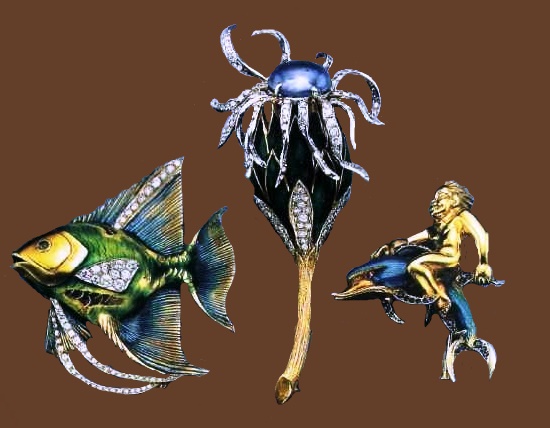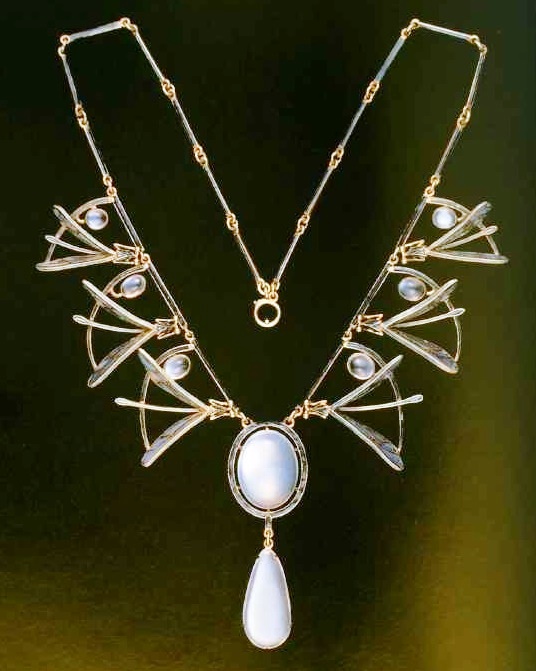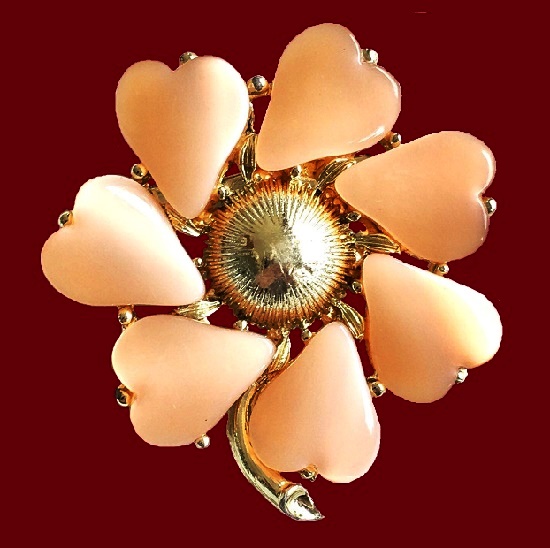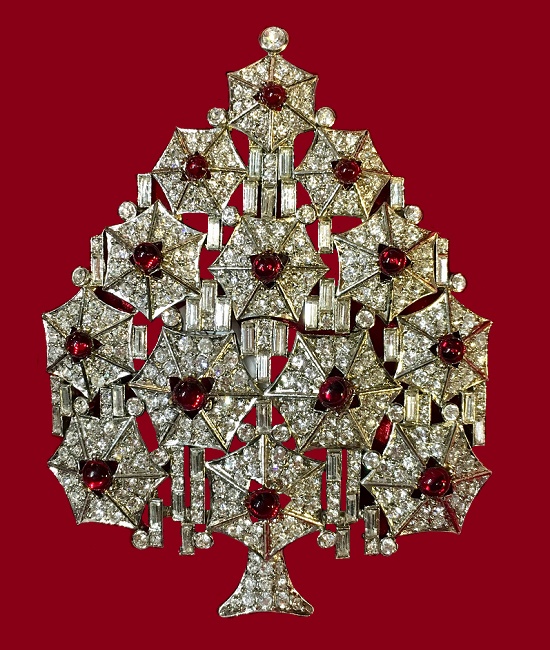Italian jeweler Enrico Serafini

Three brooches made of gold with enamel and gems. 1950’s. Work by Italian jeweler Enrico Serafini (1913-1968)
Italian jeweler Enrico Serafini (1913–1968)
Born in 1913, Enrico Serafini opened his jewelry workshop in Florence, at 4 Piazza Santa Felicita, on 15 September 1947. The history of the brand spans only two decades, from 1947 to 1968.
Florence based jeweler drew inspiration in Italian nature with its beautiful flowers, seashells, fish, and more. Creating his masterpieces, which were wearable art implemented in brooches, bracelets and earrings, Enrico worked as a sculptor. Traditionally, the jeweler used precious stones – diamonds, rubies, emeralds and sapphires. Also, gold, platinum and silver. Talent of designer, high quality materials and careful processing of details gave results. Thus, he received the Diamond International Award in 1957. Noteworthy, he became the first Italian to get such a prestigious prize.
Unfortunately, his company ceased to exist in 1968, as its founder Enrico Serafini passed away at the age of 55.





